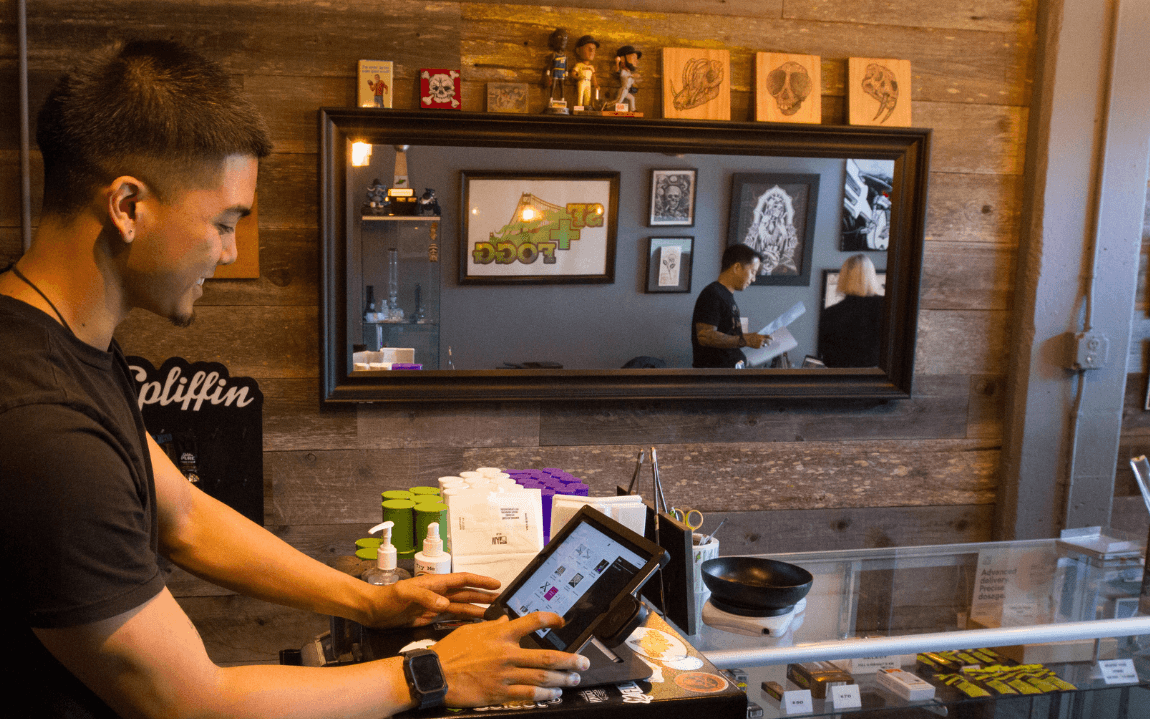What Changed?
The excise tax calculation changed on January 1, 2023, from 26.25% of the wholesale cost to 15% of the retail sale price.
Does your city have a local tax?
- It's likely that your local tax may be included in your gross receipts for the calculation of excise tax (make sure you confirm with an accounting or tax professional!)
Do you add excise tax to your receipts?
- CDTFA's most recent guidance requires cannabis retailers to show the cannabis excise tax charged on the customer receipt.
What does that mean for me?
If a local cannabis tax exists in one or more of the jurisdictions where you sell cannabis, you may have 3 tiers of taxes to calculate: local, excise, and sales. If you don't have a local tax, you may only have 2 tiers of taxes to calculate: excise and sales.
If you operate in a jurisdiction with three tax tiers, the excise tax will also compound local taxes and apply to any fees on an order (such as delivery or payment fees). So for a $10 product, instead of adding 10% + 15% + 9.5% ($3.45 total tax), the tax compounds as $10 x 1.1 x 1.15 x 1.095 ($3.85 total tax).
Read the bulletin from CDTFA here.
Update your prices to reflect the new tax calculation
If you do not change your prices, your profit margins will likely change on sales made after January 1.
To keep your margins the same, account for a 15% tax at retail when calculating your new prices. This means the prices paid by customers will likely go up.
For example, in 2022 a product with a wholesale cost of $1 has $0.26 in excise due. If you priced that product at $2, your margin is ($2 - $1 - $0.26), which is $0.74 (before accounting for sales tax).
In 2023, if you keep the product price at $2, the customer will pay more because excise is added to the price amount ($2 + 15% = $2.30). This means your margin increases but so does the amount the customer pays ($2.30 - $1 - $0.30).
What About Excise Taxes I Already Paid?
Once you are ready to remit your first quarter's excise tax, you will want to calculate the amount of excise tax you have already paid using the pre-2023 calculation to claim as a credit.
For example, if I purchased a product for $10 in December 2022, the excise paid is $2.63 (based on 15% of the wholesale cost + 75% markup).
If I sell that product at retail for $20 in January 2023, the excise collected and due is $3 (based on 15% of the retail sale price).
The retailer can claim the $2.63 in excise already paid to the distributor as a credit, leaving the retailer with a $0.37 remaining tax liability to remit to CDTFA.
Examples of Tax Calculations before and after January 1
Example 1 - let's take a product purchased for $10 wholesale and sold for $20 at retail, and apply the excise tax and a 10% sales tax. Before 2023, excise is calculated using the wholesale cost plus a markup. In this example excise due would be $2.63 (which is 15% of $10 + 75%).
From 2023 on, excise is calculated using the retail sale price, including any fees or local taxes.
 Instead of PRICE + 15% + 10% the calculation is ((Price + 15%) + 10%). Due to this compounding, the total tax rate is actually 26.5% of the retail sale price instead of 25%.
Instead of PRICE + 15% + 10% the calculation is ((Price + 15%) + 10%). Due to this compounding, the total tax rate is actually 26.5% of the retail sale price instead of 25%.
Notice in the pre-Jan 1 example that the excise tax is based on the wholesale cost and included in the retail price (so the 10% sales tax applied to the price also compounds the excise that is baked in).
Example 2 - same as Example 1, but including a local tax and delivery fee
Let's keep things simple by using the same $10 wholesale, $20 selling price example as above, but this time adding a local tax of 10% and delivery fee of $10.
Excise tax applies as 15% of the retail price, the local tax and the delivery fee.
This means excise is now 15% of $32 instead of 15% of $20 💸
Sales tax is 10% of the retail price plus any other taxes: ($20 + $2 + $4.80)

NOTE: If you are a retailer in the City of LA, make sure to consult tax and legal professionals about how to calculate LA's cannabis business tax. From our understanding, both the City and State have told retailers in LA that their tax applies last and compounds the other.


